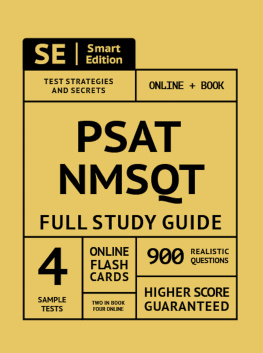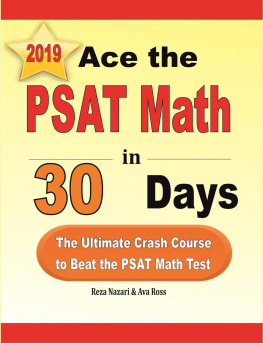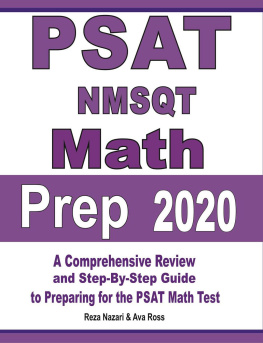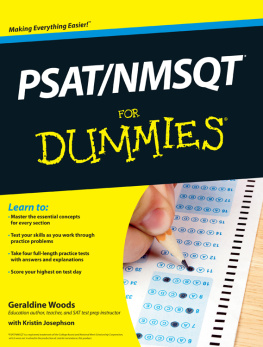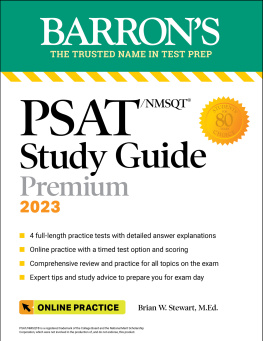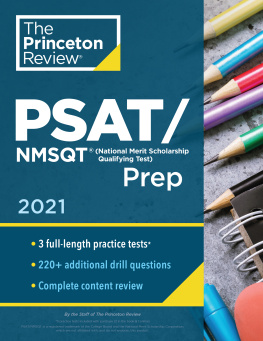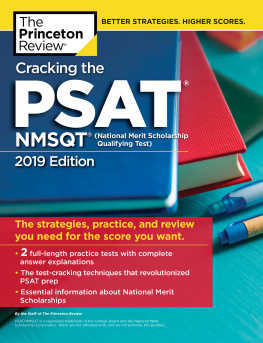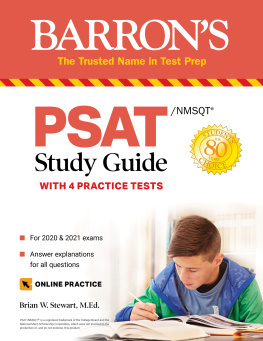Smart Edition Media - PSAT/NMSQT Full Study Guide
Here you can read online Smart Edition Media - PSAT/NMSQT Full Study Guide full text of the book (entire story) in english for free. Download pdf and epub, get meaning, cover and reviews about this ebook. year: 2020, publisher: Smart Edition Media, genre: Home and family. Description of the work, (preface) as well as reviews are available. Best literature library LitArk.com created for fans of good reading and offers a wide selection of genres:
Romance novel
Science fiction
Adventure
Detective
Science
History
Home and family
Prose
Art
Politics
Computer
Non-fiction
Religion
Business
Children
Humor
Choose a favorite category and find really read worthwhile books. Enjoy immersion in the world of imagination, feel the emotions of the characters or learn something new for yourself, make an fascinating discovery.
- Book:PSAT/NMSQT Full Study Guide
- Author:
- Publisher:Smart Edition Media
- Genre:
- Year:2020
- Rating:5 / 5
- Favourites:Add to favourites
- Your mark:
- 100
- 1
- 2
- 3
- 4
- 5
PSAT/NMSQT Full Study Guide: summary, description and annotation
We offer to read an annotation, description, summary or preface (depends on what the author of the book "PSAT/NMSQT Full Study Guide" wrote himself). If you haven't found the necessary information about the book — write in the comments, we will try to find it.
PSAT/NMSQT Full Study Guide — read online for free the complete book (whole text) full work
Below is the text of the book, divided by pages. System saving the place of the last page read, allows you to conveniently read the book "PSAT/NMSQT Full Study Guide" online for free, without having to search again every time where you left off. Put a bookmark, and you can go to the page where you finished reading at any time.
Font size:
Interval:
Bookmark:
Evaluating and Integrating Data
Effective readers do more than absorb and analyze the content of sentences, paragraphs, and chapters. They recognize the importance of features that stand out in and around the text, and they understand and integrate knowledge from visual features like maps and charts.
Text Features
Elements that stand out from a text are called text features . Text features perform many vital functions.
Introducing the Topic and Organizing Information
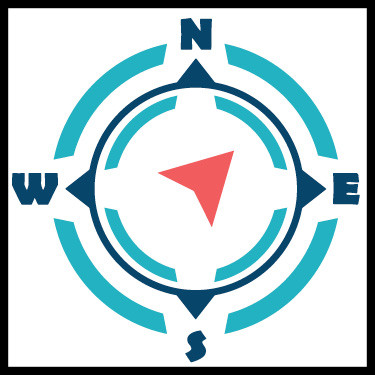
Compare!
The title on a fictional work does not always state the topic explicitly. While some titles do this, others are more concerned with hinting at a theme or setting up the tone.
Titles The title of a nonfiction text typically introduces the topic. Titles are guiding features of organization because they give clues about what is and is not covered. The title of this section, Text Features, covers exactly thatnot, for example, implicit ideas.
Headings and Subheadings Headings and subheadings provide subtopic information about supporting points and let readers scan to see how information is organized. The subheadings of this page organize text features according to the functions they perform.
Helping the Reader Find Information
Table of Contents The table of contents of a long work lists chapter titles and other large-scale information so readers can predict the content. This helps readers to determine whether or not a text will be useful to them and to find sections relevant to their research.
Index In a book, the index is an alphabetical list of topics covered, complete with page numbers where the topics are discussed. Readers looking for information on one small subtopic can check the index to find out which pages to view.
Footnotes and Endnotes When footnotes and endnotes list sources, they allow the reader to find and evaluate the information an author is citing.
Emphasizing Concepts
Formatting Features Authors may use formatting features such as italics , boldfacing or underlining to emphasize a word, phrase, or other important information in a text.
Bulleting and numbering Bullet points and numbered lists set off information and allow readers to scan for bits of information they do not know. It also helps to break down a list of steps.
Presenting Information and Illustrating Ideas
Graphic Elements Charts, graphs, diagrams, and other graphic elements present data succinctly, illustrate complex ideas, or otherwise convey information that would be difficult to glean from text alone.
Providing Peripheral Information
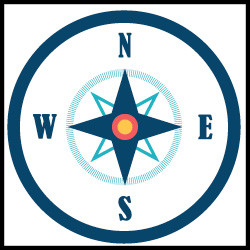
Fun Fact!
Online, a sidebar is sometimes called a doobly doo.
P.S. This is an example of a sidebar.
Sidebars Sidebars are text boxes that contain information related to the topic but not essential to the overall point.
Footnotes and Endnotes Some footnotes and endnotes contain information that is not essential to the development of the main point but may nevertheless interest readers and researchers.
Maps and Charts
To read maps and charts, you need to understand what the labels, symbols, and pictures mean. You also need to know how to make decisions using the information they contain.
Maps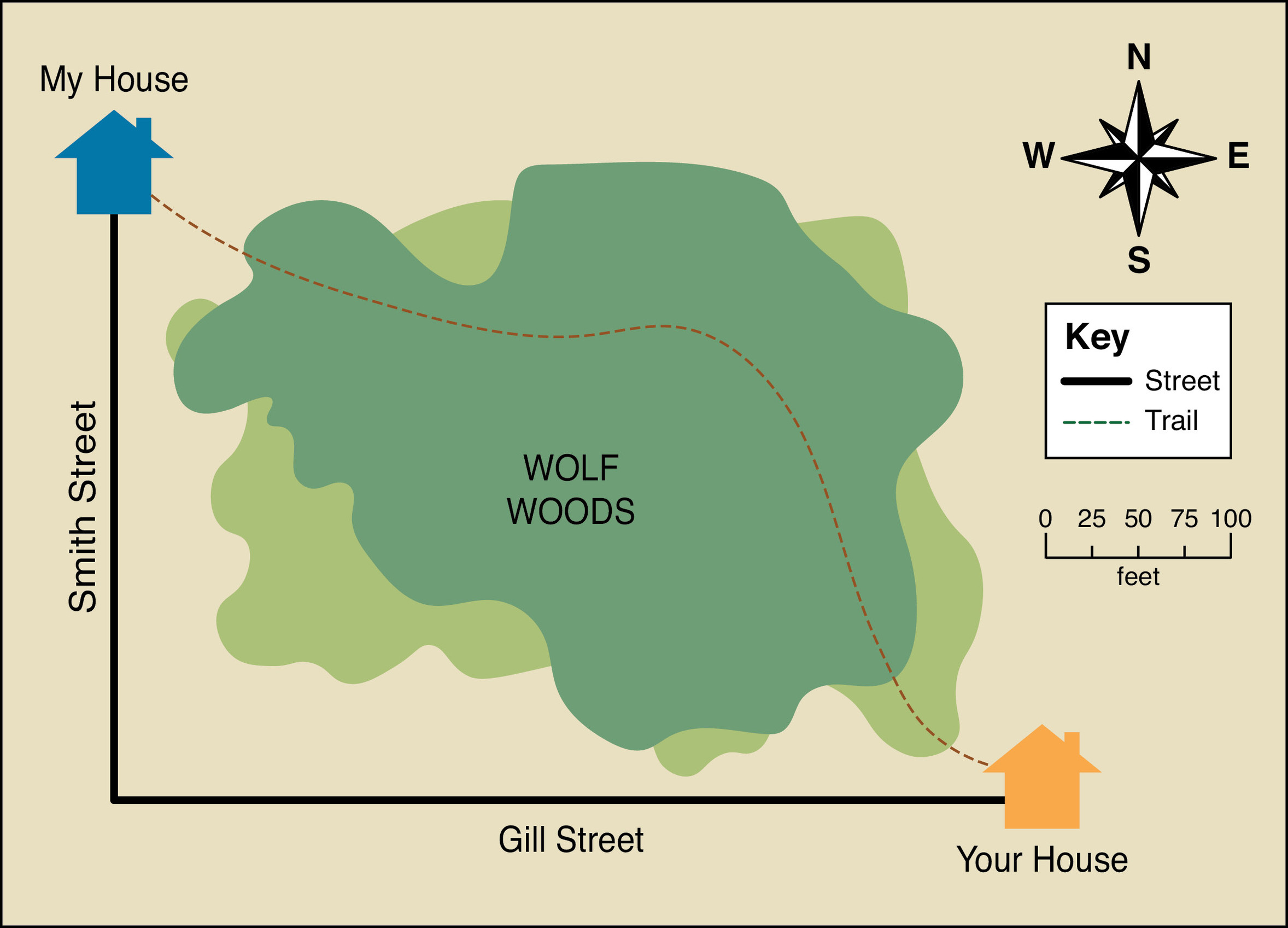
Maps are stylized pictures of places as seen from above. A map may have a box labeled Key or Legend that provides information about the meanings of colors, lines, or symbols. On the map below, the key shows that a solid line is a road and a dotted line is a trail.
There may also be a line labeled scale that helps you figure out how far you need to travel to get from one point on the map to another. In the example below, an inch is only 100 feet, so a trip from one end to the other is not far.
Some maps, including the example above, have compasses that show directions. If no compass is pictured, assume the top of the map is north.
Charts
Nutrition Facts Labels
Nutrition facts labels are charts many people see daily, but not everyone knows how to read them. The top third of the label lists calorie counts, serving sizes, and amount of servings in a package. If a package contains more than one serving, a person who eats the entire contents of the package may be consuming many times the number of calories listed per serving.
The label below lists the content of nutrients such as fats and carbohydrates, and so on. According to the label, a person who eats one serving of the product in the package will ingest 30 mg of cholesterol, or 10% of the total cholesterol he or she should consume in a day.
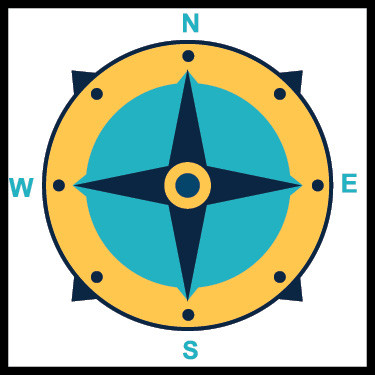
Keep in mind...
The percentages on a Nutrition Facts label do not (and are not meant to) add up to 100. Instead, they show how much of a particular nutrient is contained in a serving of the product, as a proportion of a single persons Daily Value for that nutrient. The Daily Value is the total amount of a nutrient a person is supposed to eat in a day, based on a 2000-calorie diet.
In general, a percentage of 5% or less is considered low, whereas a percentage of 20% or more is considered high. A higher percentage can be good or bad, depending on whether or not a person should be trying to get more of a particular ingredient. People need to get plenty of vitamins, minerals, and fiber. In contrast, most people need to limit their intake of fat, cholesterol, and sodium.
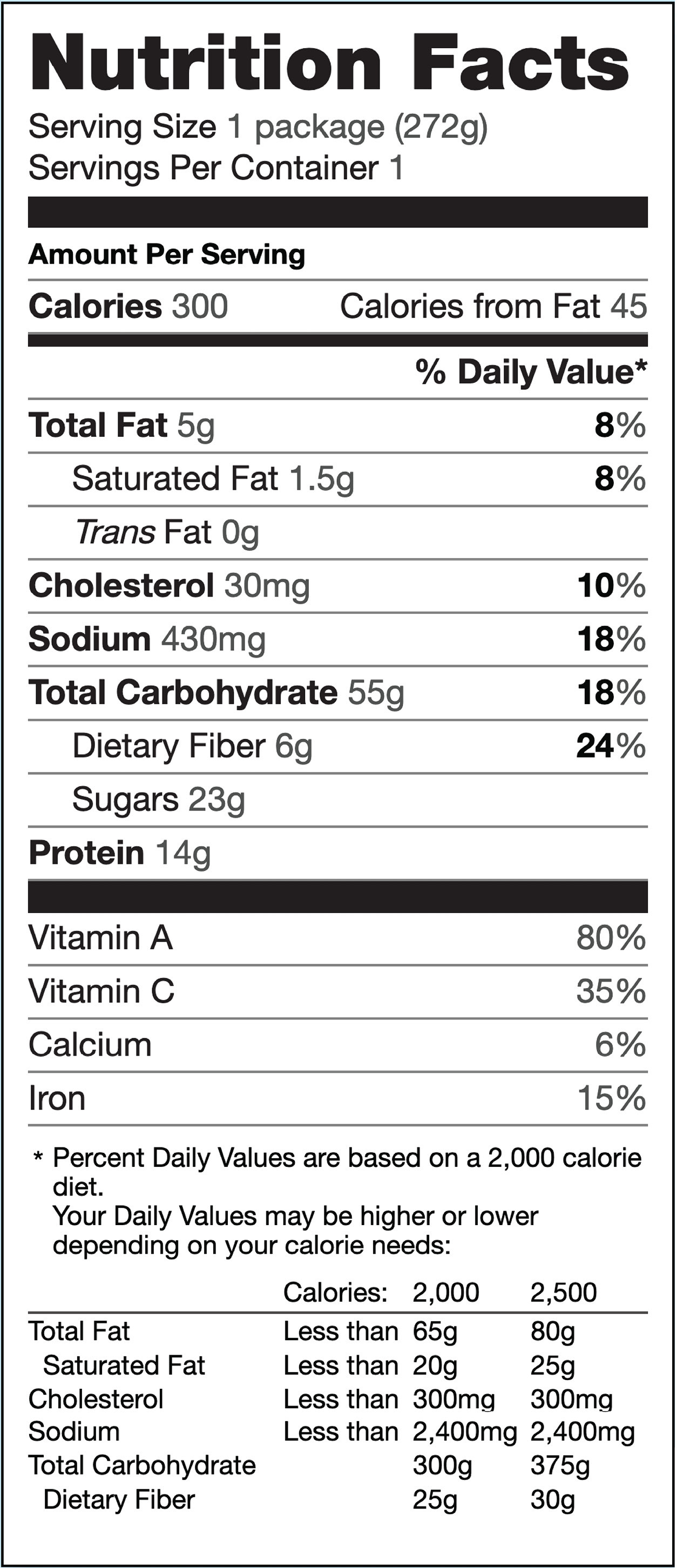
Tables
Tables organize information into vertical columns and horizontal rows. Below is a table that shows how much water falls on areas of various sizes when it rains one inch. It shows, for instance, that a 40 x 70 roof receives 1,743 gallons of rain during a one-inch rainfall event.
Area | Area (square miles) | Area (square kilometers) | Amount of Water (gallons) | Amount of Water (liters) |
My roof 40 x 70 feet | .0001 | .000257 | 1,743 gallons | 6,601 liters |
1 acre (1 square mile = 640 acres) | .00156 | .004 | 27,154 gallons | 102,789 liters |
1 square mile | 2.6 | 17.38 million gallons | 65.78 million liters | |
Atlanta, Georgia | 132.4 | 342.9 | 2.293 billion gallons | 8.68 billion liters |
United States | 3,537,438 | 9,161,922 | 61,474 billion gallons | 232,700 billion liters |
Lets Review!
Readers must understand how and why text features make certain information stand out from the text.
Readers must understand and interpret the content of maps and charts.
Anthony Graftons book The Footnote: A Curious History is an in-depth history of the origins and development of the footnote. (Also, this is an example of a footnote.)
Font size:
Interval:
Bookmark:
Similar books «PSAT/NMSQT Full Study Guide»
Look at similar books to PSAT/NMSQT Full Study Guide. We have selected literature similar in name and meaning in the hope of providing readers with more options to find new, interesting, not yet read works.
Discussion, reviews of the book PSAT/NMSQT Full Study Guide and just readers' own opinions. Leave your comments, write what you think about the work, its meaning or the main characters. Specify what exactly you liked and what you didn't like, and why you think so.

